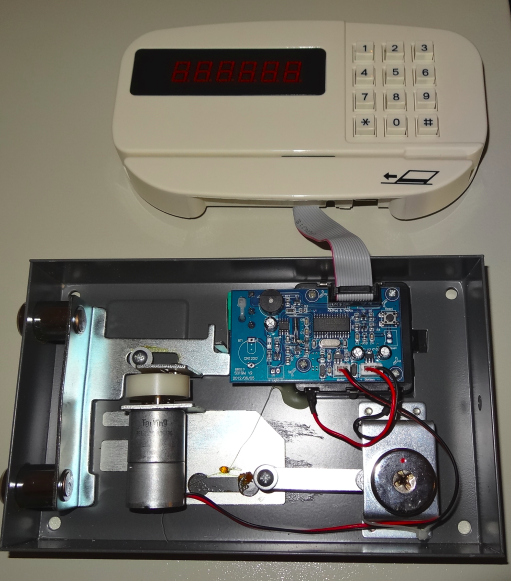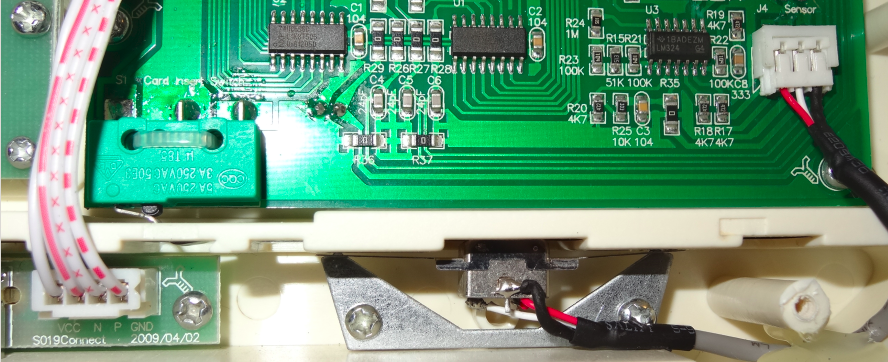This article is more than 1 year old
Don't put that duffel bag full of cash in the hotel room safe
Two words: Default passcodes... and there's MORE
Hotel safes are far less secure than guests are led to believe. Widespread use of default codes and other issues mean that it is relatively easy for criminals to get at hotel guests' valuables, security firm G DATA warns.

The dissembled safe shows (above) the input panel, which is normally attached to the front of the safe, where the user enters the PIN code or swipe a card. Below is the opening mechanism, located behind the door...
Researchers of G DATA reached their conclusions after buying a very common model from Amazon and investigating how it worked.
With a little technical effort, the safe can be hacked and cleared out of valuables in minutes, they said.
In addition, hotel room safes' magnetic card readers offer criminals the option of using skimming to access the data on the card before selling on this information to other crooks through underground forums.
The safe model investigated by the G DATA could be opened using various methods. Most straightforwardly, the safe can easily be opened using the master code provided by the manufacturer.
This feature is only supposed to be used to open it in emergencies. However, many hotel owners do not bother to change the default code – making life easy for thieves. "We urgently advise hotel owners to change the master code in safes and to regularly check room safes for modifications," said Ralf Benzmüller, head of G DATA SecurityLabs.
G DATA is not naming the model of the device used in its tests but a spokeswoman for the firm said the kit is widely used and resold by at least five suppliers.
Tests by G DATA researchers on rooms where they stayed with hotel safes revealed that "more often than not" the default code was still in place. These tests were not systematic or done on a wide scale but nonetheless suggest that default passcodes are a real problem.
Another option for opening a safe is to hack the emergency lock. The hotel manager is entrusted with an emergency key. However, after unscrewing a plate on the front of the safe, the lock underneath might be opened using a false key, security experts at the German security software firm warn.

What if it's the credit card you were using to open the safe they're really after? The sensor (which detects if a card is present or not) is the green block on the left with a metal strip underneath, and the reader is the element in the middle with the white and red wire.
The code can also be reset via a short circuit and an arbitrary new code entered. This code can then be used to open the safe. “A safe is not the worst place to store valuables," Benzmüller concludes. "The security of the safes, however, should not overestimated.”
A detailed report on the research - complete with pictures - can be found in the G DATA's security blog here.
A related press release from G DATA summarises the research as well as tips on what hotel guests should look out for when using safes.
Would-be thieves would still need to get into hotel room but separate research by other researchers has uncovered shortcomings in mag stripe key entry systems, so relying on this as a barrier doesn't seem especially sensible. And that's before we even consider the possibility of corrupt insiders. ®
